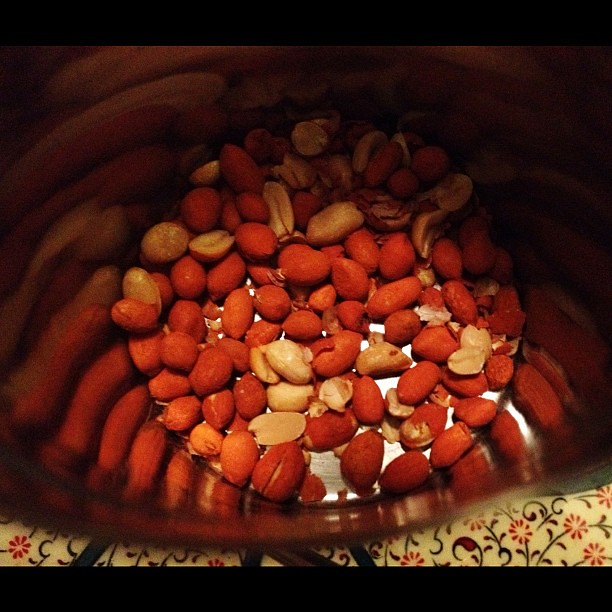I refuse to share ice cream with my daughter, just like I used to refuse to share peanuts with my father. This refusal to share in both cases primarily has to do with the differential speed of consumption.
With my father and peanuts, it was a matter of ability – as someone who had grown up on a peanut farm (and thus he was a fan of Jimmy Carter), he was an expert at shelling peanuts. The Bangalore-born me was much less expert, and so before I knew it he would have finished the lot of it.
With my daughter and ice cream, it is a matter of willingness – she likes to finish it quickly, in big spoons. I like to savour it over a long time – at home, I use a rather small spoon and eat it slowly. Nowadays I’ve been trying to cut down sugars and so when I eat them I try to get the maximum benefit out of them and thus eat slowly. However, even as a child I would eat my desserts slowly, trying to “extract maximum benefits”.
So last night we were having ice cream (individual small tubs of course). Daughter finished hers quickly and came to me, to see that my tub was still half full (and I was blogging as I was eating it).
“Appa, why do you like to turn your ice cream into milkshake?”, she asked.
“I don’t”, I said, “I just try to get the maximum value out of it, and thus I eat it slowly”.
“But then if you take too long to eat, then it turns into milkshake which is much less enjoyable than ice cream”, she countered. She had a valid point.
And then I realised this is exactly the problem I worked on during my stint as an investment banking quant in 2009-11. I was working on algo trading, specifically execution of large block deals.
The tradeoff there was that if you traded too quickly, you would end up moving the market and thus trading at an unfavourable price. On the other hand, if you traded too slowly, the natural volatility of the stock would mean that the market might move against you. And so you had to balance the two and trade.
I won’t go into the details on how we solved it (my erstwhile bank might not like it), but it suffices to say here that it is similar to eating ice cream.
If you eat too quickly, you run the risk of not getting sufficient “benefit” out of the ice cream at hand. If you eat too slowly, then there is the risk that the ice cream itself will melt and thus be less enjoyable for you.
I tried explaining this analogy to my daughter last night, but she didn’t get it. I guess she is too young to understand risk, volatility, market impact and the like.
And so I’m inflicting this on you!


